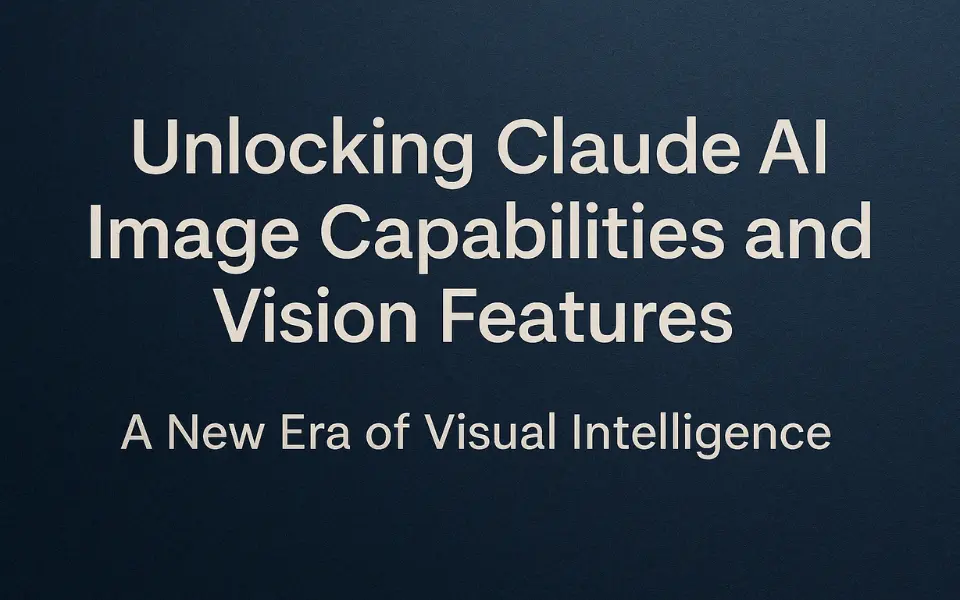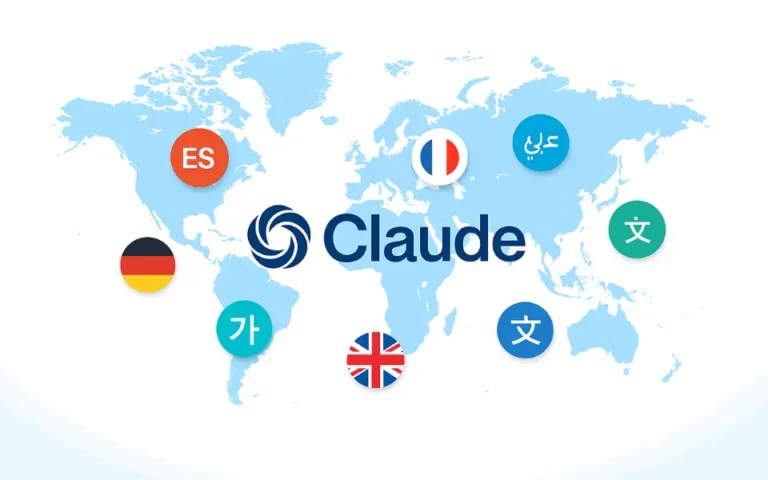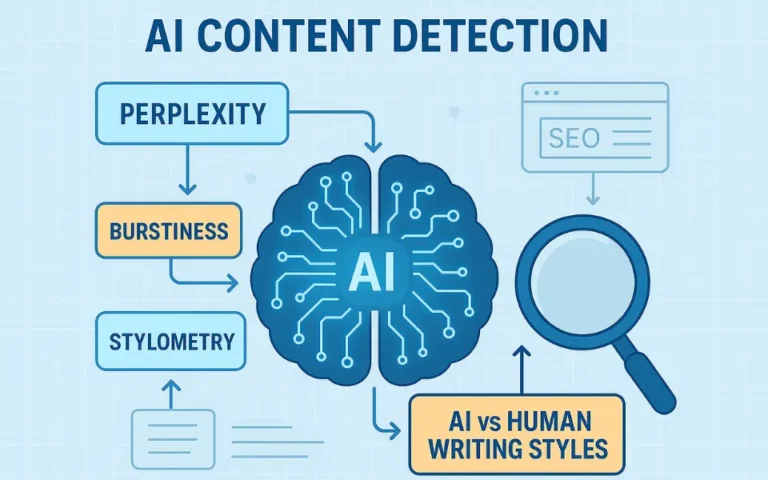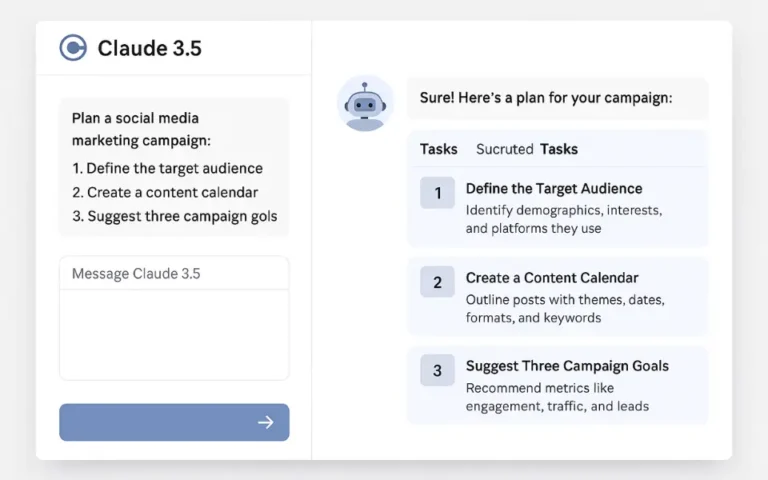Unlocking Claude AI Image Capabilities and Vision Features
Artificial Intelligence continues to break boundaries, and Claude AI is no exception. Known for its advanced conversational abilities, Claude AI now expands its scope with impressive image capabilities. Whether you’re a developer exploring AI for innovative projects, a researcher seeking cutting-edge tools, or a tech enthusiast keeping up with the latest advancements, this post will serve as your comprehensive guide to Claude AI’s new vision features.
This guide covers everything you need to know about Claude AI’s image processing abilities, how to use them, best practices, pricing insights, and sample use cases. By the end, you’ll have a deep understanding of how Claude can support image-related tasks across a variety of industries.
What Are Claude AI’s Image Capabilities?
Claude AI’s image capabilities allow users to upload and process images through its advanced computer vision algorithms. These features are designed to identify objects, analyze visual information, extract meaningful data, perform comparisons, and even respond to structured prompts involving images.
By combining the power of natural language processing with cutting-edge vision algorithms, Claude provides detailed and context-aware responses to image-related tasks.
Key Features of Claude AI’s Vision Technology
Claude AI’s vision capabilities are packed with features that make it suitable for a diverse range of applications:
- Image Recognition: Identify objects, patterns, and text within an image with high accuracy.
- Multi-Image Analysis: Compare and analyze multiple images to draw meaningful conclusions.
- Contextual Responses: Use natural language prompts to gain detailed insights about images.
- Hybrid Functionality: Seamlessly integrate text processing and image analysis.
- Scalable API: Access image capabilities via Claude’s Messages API for integration into larger systems or applications.
These features make Claude a powerful tool for any situation where visual data needs to be combined with natural language understanding.
How to Use Claude AI’s Vision Capabilities
Claude’s image capabilities are versatile and accessible through multiple interfaces, allowing flexibility for users at different levels of technical expertise.
Here’s how to get started:
Using the Claude.ai Interface
- Sign in to Claude.ai:
Create an account or log in to your existing account via the Claude.ai website.
- Locate the Vision Feature:
Choose the option to upload images. This feature is typically intuitive and located on the main dashboard.
- Upload Images:
Drag and drop your image or select it from your file system. Ensure it meets the recommended quality and resolution for optimal processing.
- Input a Prompt:
Add a natural language prompt. For example, “What objects are present in this image?”
- Receive Responses:
View Claude’s detailed analysis, which may include object identification, text extraction, or contextual insights.
Using the Console Workbench
The Console Workbench offers advanced tools for developers:
- Access the Console Workbench:
Navigate to it through your Claude account.
- Use Advanced Image Options:
Leverage tools for multi-image comparisons, structured prompts, and testing various model configurations for thorough analysis.
- Experiment and Refine:
Fine-tune inputs to develop ideal results, integrating them with your projects as needed.
Using the Messages API
- Integrate API:
Use Claude’s Messages API to embed image capabilities into your applications.
- Set Up Requests and Parameters:
Format the input request to include the image file and accompanying structured prompts.
- Analyze Responses:
Review the structured JSON format responses featuring object data, textual insights, and more.
- Scale Your Workflow:
Automate image analysis processes within your app or system for greater efficiency.
Messages API
Developers seeking scalable solutions can integrate Claude AI Vision through the Messages API:
curl https://api.anthropic.com/v1/messages \
-H "x-api-key: $API_KEY" \
-H "anthropic-version: 2023-06-01" \
-H "content-type: application/json" \
-d '{
"model": "claude-3-opus-20240229",
"max_tokens": 1024,
"messages": [
{
"role": "user",
"content": [
{
"type": "image",
"source": {
"type": "base64",
"media_type": "image/jpeg",
"data": "BASE64_ENCODED_IMAGE_DATA"
}
},
{
"type": "text",
"text": "Describe this image in detail."
}
]
}
]
}'This approach enables seamless integration with existing applications and workflows, allowing for automated image analysis at scale.
Best Practices for Using Images with Claude AI
To maximize the effectiveness of Claude AI’s vision capabilities, follow these best practices:
1. Optimize Image Quality
Upload clear, high-resolution images to achieve the best results. Low-quality or blurry visuals may lead to inaccurate analyses.
2. Follow Recommended Resolutions
Adhere to Claude’s resolution recommendations, typically outlined in their documentation, to avoid processing errors.
3. Structured Prompts
Craft prompts with precision. For example:
- Good Prompt: “List all objects in this image and describe their functions.”
- Poor Prompt: “What’s this?”
Detailed prompts elicit clear, comprehensive responses.
Example Pricing Structure for Claude AI Vision Tools
Claude AI offers a transparent pricing model for its vision features. Here’s an overview (hypothetical example for illustration purposes):
- Freemium Plan:
-
- Limited monthly usage of vision features.
- Supports basic image recognition tasks.
-
- Pro Plan:
-
- $20/month.
- Unlimited single-image processing with advanced contextual analysis.
-
- Enterprise Plan:
-
- Custom pricing.
- Scalable API usage for high-performance applications.
-
Refer to the official Claude AI pricing page for the latest and most accurate details.
Use Cases for Claude AI’s Image Capabilities
Claude AI’s image tools are transforming workflows across various industries.
Here are a few potential applications:
- Retail:
Analyze product images for automated tagging and categorization.
- Healthcare:
Identify patterns in medical imagery for enhanced diagnostics.
- Logistics:
Inspect packages and shipments for quality assurance.
- Media & Marketing:
Evaluate images for aesthetics and predict engagement potential.
Limitations of Claude AI’s Image Processing
While Claude AI is highly advanced, it does come with a few limitations:
- Performance may vary for highly complex or abstract images.
- It may struggle with incomplete or partially visible objects.
- Large-scale API usage can be resource-intensive without proper optimization.
Understanding these constraints will help users deploy the tool effectively.
Prompt Examples for Vision Capabilities
Single Image Description
Prompt:
“Describe the objects in this image and their approximate sizes.”
Response:
“This image includes a cup of coffee (approximately 6 inches tall) and a laptop (15 inches wide).”
Multiple Image Comparison
Prompt:
“Compare these two images and identify the key differences.”
Response:
“Image 1 features a red car while Image 2 features a blue car. The background in Image 1 shows a forest, whereas Image 2 features a cityscape.”
Practical Use Cases for Claude’s Vision Features
Here are some powerful real-world applications:
| Industry/Use | Example |
|---|---|
| Education | Analyze charts, diagrams, and slides for students. |
| Business | Summarize scanned contracts or invoices. |
| Marketing | Generate social media captions or design critiques. |
| Tech Support | Diagnose problems from screenshots. |
| Healthcare | Read and interpret medical images (with care and oversight). |
Frequently Asked Questions: Claude AI Image Capabilities
Enhance Your Projects with Claude AI’s Vision Capabilities
Claude AI’s image capabilities mark a significant advancement in artificial intelligence, enabling users to combine text and image analysis in one seamless experience. Whether you’re developing cutting-edge solutions, enhancing team workflows, or simply exploring the possibilities of AI, Claude provides the tools to make it happen.
Step into the future of AI-powered image processing. Sign up today to try Claude AI and redefine how you work with visual data.







